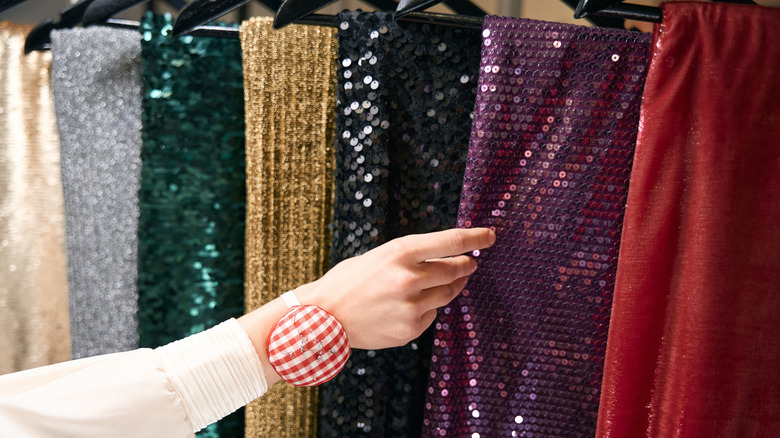What Is Acetate Fabric?
Acetate fabrics are made with spun filaments of cellulose taken from wood pulp. Classified as a chemical fiber textile or semi-synthetic, acetate is sometimes mixed with silk, wool, or cotton to make it stronger. Acetate flakes are generated by a reaction of the wood pulp to a variety of acetic acids. The flakes are dissolved in a solvent, and then passed through a spinneret — as the solvent evaporates — to create the filaments used to construct the acetate fabric.
Acetate often takes the place of other shiny, soft, and luxurious fabrics on furniture, and for drapes, curtains, and other home decor, along with being used for clothing, evening attire, and clothing and furniture linings.
History of Acetate
The second oldest manufactured fiber in the U.S. after rayon, acetate was first used in France as an airplane wing varnish and later developed as a fiber in the U.K. in 1923. Developed for use as a fabric in the U.S. in 1924, acetate could not be mass-produced until chemists solved the problems with dyeing the fabric. Initially, certain fumes and pollutants caused the fabric to fade or discolor. While chemists solved the issues so the fabric could be dyed, some acetates still discolor when exposed to pollutants.
Acetate Fabric Advantages and Disadvantages
Its advantages include:
- Drapes and hangs well
- Multiple sheens and color options
- Quick-drying fabric that resists shrinking
- Moth and mildew resistant
- Low static
- High luster, elegant appearance, and feel
- Fabric doesn't pill
As a man-made chemical, semi-synthetic fabric, acetate has some distinct disadvantages as well:
- No elasticity
- Not a strong material — rips easily
- Melts when heated
- May require dry cleaning, based on care tag
- Wrinkles easily
Fabric Care
Read the care tag to verify whether the acetate fabric is washable — some say "Dry Clean Only," while others may say "Do Not Dry Clean." When it's washable, clean and rinse in cold water. Do not put the fabric in the dryer, as it can melt. If it has wrinkles – and the care tag agrees — iron it on the cool setting. Perfume, certain chemical-based glues, and nail polish removers can melt acetate, so keep these chemicals away from acetate or acetate-blend drapes, upholstery, or furniture.
